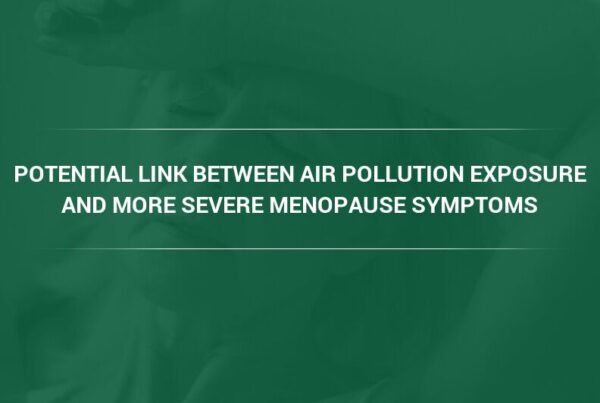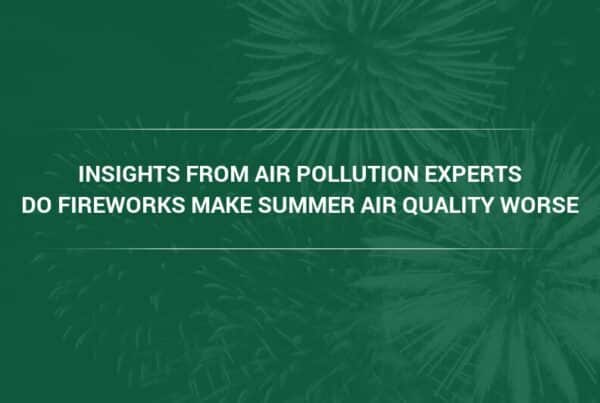Thirteen Air Pollution Action Days have been issued in Chicago so far in 2023, surpassing the 2012 record of twelve warnings issued that entire year.
Notably, all of this year’s advisories were issued between May and July, and Chicago’s air quality was the worst in the world at the end of June. Comparatively, there was only one air quality advisory last year, four in 2021, ten in 2020, and zero in 2019.
Continue reading to learn more about the causes and health effects of the increased pollution in Chicago, and strategies to protect yourself from hazardous pollutants.
Why Is There So Much Pollution in Chicago Right Now?
There are several factors that are making Chicago’s air quality significantly worse than usual.
Firstly, smoke carried on the wind from nearly 5000 wildfires burning in Canada has been affecting air quality in Chicago and many other midwestern cities since June.
Secondly, unusually high temperatures this summer facilitate the formation of ground-level ozone out of other chemicals in the air, such as volatile organic compounds and nitrogen oxides. Sources of chemicals that can react to form ozone include cars, power plants, industrial boilers, refineries, chemical plants, and other pollution sources.
This effect is further compounded by higher usage of air conditioning in the intense summer heat. Some air conditioning units and systems emit ozone or chemicals that can react with each other to form ozone.
Learn More: Kansas City Ozone Alert Marks Smoggiest Summer Since 2018
What Kinds of Air Pollution Are Affecting Air Quality in Chicago?
Wildfire smoke contains a range of gaseous pollutants, such as:
- ozone
- sulfur dioxide
- nitrogen oxides
- carbon monoxide
- carbon dioxide
- volatile organics compounds (VOCs)
Particulate matter (PM) is another pollutant that can be found in wildfire smoke and linger in the air for days or weeks, depending on the size and chemical composition of the particles. Fine particulate matter (PM2.5) particles have been concerningly high in Chicago this summer; these particles measure under 2.5 micrometers in diameter and pose many health risks to the lungs, heart, brain, and other vital organs due to being small enough to get past the body’s natural defenses against larger particles in the air.
Related: New Study Highlights Tangible Health and Economic Impacts of Wildfire Smoke Pollution
Ground-level ozone is a highly reactive molecule that causes tissue damage when inhaled by reacting with the cells of the lungs and respiratory tract. During acute exposure, this causes the muscles of the respiratory system to constrict, trapping air in the alveoli, which makes it more difficult for the lungs to exchange oxygen for carbon dioxide. This restriction results in symptoms such as:
- Coughing
- Sore throats
- Wheezing
- Difficulty breathing
- Pain when breathing deeply
- Increase susceptibility to infection
Long-term exposure to ozone can result in a lasting reduction in lung capacity as well as reduced immune system function. The effects of ozone on lung health are especially pronounced for the elderly, children, and people with existing respiratory conditions such as asthma and COPD.
What Should You Do During An Air Quality Warning in Chicago?
Air quality experts recommend several strategies for keeping your lungs safe during air quality advisories in Chicago:
- Avoid exercising outdoors. In general, it is best to minimize outdoor time when ambient air pollution reaches unhealthy levels, but outdoor exercise, such as running, cycling, and hiking can make the health effects of air pollution worse because you breathe deeper and more often while exercising.
- Minimize use of your car. Driving and related activities such as filling up your gas tank can increase levels of ozone in the air. For this reason, air quality experts and Chicago city officials recommend carpooling, combining errands into one trip, and working from home if possible to minimize use of your car.
- Stay indoors in locations with a controlled, filtered air supply if possible. It is important to stay indoors when there are dangerous levels of pollution outdoors, especially when there is visible smog or haze in the air. However, indoor air can be more polluted than outdoor air, and when outdoor air is circulated through a building without being filtered, more pollution is repeatedly introduced into the airstream.
- Use factory-tested and certified HEPA and activated carbon filters in your home. To protect yourself from ozone and wildfire smoke in your home, it is important to use air filters to combat both gaseous and particulate pollutants. Factory-tested and certified HEPA filters and highly rated MERV-A filters are effective for removing particulate matter from the air, but cannot target gaseous pollutants such as ozone. Activated carbon filters, on the other hand, are effective against ozone and other gaseous pollutants but cannot capture particulate matter. Because of the limited capacity of most residential HVAC systems, standalone air purifiers such as the CityM by Camfil that use both HEPA and activated carbon filters are often the best option for protecting homes from hazardous pollutants.
- Keep an eye on the Air Quality Index to make sure that pollution levels are safe before resuming outdoor exercise and activities.
About Camfil Clean Air Solutions
For more than half a century, Camfil has been helping people breathe cleaner air. As a leading manufacturer of premium clean air solutions, we provide commercial and industrial systems for air filtration and air pollution control that improve worker and equipment productivity, minimize energy use, and benefit human health and the environment. We firmly believe that the best solutions for our customers are the best solutions for our planet, too. That’s why every step of the way – from design to delivery and across the product life cycle – we consider the impact of what we do on people and on the world around us. Through a fresh approach to problem-solving, innovative design, precise process control, and a strong customer focus we aim to conserve more, use less and find better ways – so we can all breathe easier.
The Camfil Group is headquartered in Stockholm, Sweden, and has 30 manufacturing sites, six R&D centers, local sales offices in 35+ countries, and about 5,600 employees and growing. We proudly serve and support customers in a wide variety of industries and in communities across the world. To discover how Camfil USA can help you to protect people, processes and the environment, visit us at www.camfil.us/
##
Media Contact:
Lynne Laake
Camfil USA Air Filters
T: 888.599.6620
E: Lynne.Laake@camfil.com
F: Friend Camfil USA on Facebook
T: Follow Camfil USA on Twitter
Y: Watch Camfil Videos on YouTube



